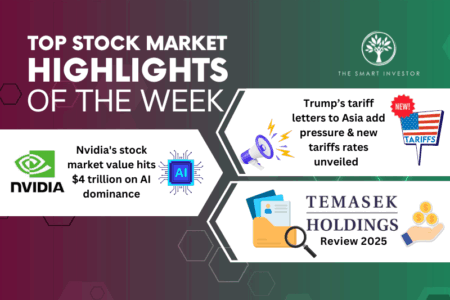Without a doubt, electric vehicles (EV) will soon dominate the automotive industry as they progress to become the future of automobiles.
We have progressed from nascent technological development to the pursuit of the commercialisation of EVs and their supporting infrastructure.
Such advancements have even resulted in notable names such as Tesla Inc. (NASDAQ: TSLA) becoming the bellwether of stock indexes.
Amidst the bright outlook, we pause to question if our excitement over EV’s potential has driven valuations of such companies to irrationally-high levels.
Share prices performed poorly in 2022
To determine this, we look at the share prices of several EV players.
Many of these companies’ share prices have plummeted from a year ago.
For example, NIO Inc. (NYSE: NIO) fell by 55.9% and XPeng Inc. (NYSE: XPEV) plunged by a whopping 74.5%.
In comparison, the NYSE Composite only dipped by 3.1% over the same period.
Elsewhere on the NASDAQ, Tesla and Rivian Automotive Inc. (NASDAQ: RIVN) had one-year returns of -26.6% and -66.2% respectively, relative to the NASDAQ Composite Index’s decline of -12.5% and S&P 500’s fall of -5.8%.
Among the heavyweight names, only BYD Company Limited (OTC: BYDDF) had a smaller drop of 1.4% from a year ago.
This set of numbers shows that EV stocks have fallen sharply over the past one year.
Higher perceived growth led to higher share prices
So, why were EVs so richly valued a year ago?
The answer lies in the market’s expectations of the industry’s growth.
Companies with higher expected growth tend to fetch higher valuations and therefore, higher share prices.
Such an optimistic outlook on expected growth can be traced to the fast-rising adoption rate of EVs.
From 2020 to 2021, the proportion of EVs among all cars sold more than doubled from 4.0% to 8.6%, and is expected to eventually comprise one quarter of all cars by 2030.
Global EV sales rose by 55% year on year in 2022 to cross the 10 million units’ mark.
According to BloombergNEF, this figure is expected to balloon to nearly 21 million units by 2025, representing a compound annual growth rate (CAGR) of over 32%.
Of the EVs sold in 2022, China took the lion’s share of over 60% of units sold.
Europe had a 20-30% market share, with the United States taking the remaining 10%.
Companies which have greater penetration into the Chinese market are therefore better positioned to reap the benefits of higher sales.
By overtaking Tesla as the best-selling EV brand in China in 2022, the market rewarded BYD for its growth in market leadership, possibly also punishing Tesla in the process for giving up its crown.
Convenience, awareness and price propel Electric Vehicles sales
There are several factors contributing to high EV adoption rates.
Firstly, buyers of EVs listed convenience as their top consideration.
Convenience is linked to how developed the support infrastructure for EVs is, such as the prevalence of charging stations and the speed at which EV owners are able to charge their vehicles.
The number of publicly-available charging stations is projected to increase at a CAGR of almost 25% between 2021 and 2030, with a larger proportion of them being fast charging stations by 2030.
Secondly, consumers are becoming more environmentally conscious.
This trend is not only driven by greater awareness, but also government regulations.
One example is the European Commission’s Fit for 55 legislation which requires new vehicles registered in Europe to be zero-emission by 2035.
Both reasons contribute to more consumers buying EVs as opposed to vehicles that run on traditional internal combustion engines (ICE).
Thirdly, purchasers of EVs have price considerations.
Pricing goes beyond just the sticker price of the vehicle, but also mileage since higher mileage equates to less frequent charging and thus potentially lower costs.
As a consequence, higher mileage will impact the economics of incurring petrol versus charging costs.
While the total cost of owning an EV varies between regions, government subsidies and the significant residual value of EVs have made them an increasingly compelling option.
Mounting costs puts the pressure on Electric Vehicles makers
However, there are also factors that point towards a slower than expected growth rate of EVs.
These may even overshadow reasons for high adoption rates, leading to the recent decline in EV share prices.
Governments around the world are paring back the amount of subsidies offered to EV manufacturers.
Signs of subsidy cuts have emerged in major regions such as the UK and China.
One challenge that many EV stocks like NIO and Rivian face is that they are still loss making.
Many of them have yet to reach a scale required to breakeven and depend on subsidies to achieve profitability.
A crucial component of EVs is the battery that powers the electric motors of the car.
Demand for automotive batteries has been driven up due to escalating EV sales, leading to higher battery prices.
Batteries currently account for an estimated 30% of the price of a mass market EV.
Coupled with lower government subsidies, higher battery prices put further pressure on the profitability of EV makers.
All these factors can delay the timeline to achieving profitable sales for EV brands, thereby dampening their share prices.
The EV space remains investable
Investors who wish to continue investing in the future of EVs but find EV stocks overvalued can look elsewhere.
In light of climbing prices of automotive batteries, stocks producing EV batteries such as Panasonic Holdings (TSE: 6752) can be alternatives.
Batteries require raw materials such as lithium, cobalt, and nickel which have all experienced a surge in prices too.
In light of this, names such as Livent Corporation (NYSE: LTHM) are likely beneficiaries.
Companies providing infrastructure such as charging stations to support EVs are also potential candidates.
An example is ChargePoint Holdings (NYSE: CHPT), although investors concerned about the company’s net loss can consider other profitable ones such as Generac Holdings (NYSE: GNRC).
Get Smart: Beware of market frothiness
Even though there are alternatives to EV makers, investors ought to analyse these stocks critically.
Some companies providing ancillary services to EVs – particularly those obvious market leaders like Contemporary Amperex Technology Co. Limited (SZSE: 300750) – may have also ridden the bullish EV wave, implying that its share price may be at risk of declining.
It may be beneficial to look at smaller companies which are still reputable as those could be hidden value stocks.
Another word of caution is to not be blinded by excessive optimism.
Due to the nascent nature of the EV space, it pays to wait until companies demonstrate they can breakeven before investing in them.
The market may be getting excited over the EV sector, but it is the patient investor who will reap great rewards.
Our team has spent decades scouring SGX for stocks. And we think dividends could be the answer to rising inflation and market uncertainty in 2023. With our newest FREE report, you’ll have everything you need to find, keep and make more money from dividend stocks. Click here to download it for free.
Follow us on Facebook and Telegram for the latest investing news and analyses!
Disclosure: Tan Ke Xuan does not own shares in any of the companies mentioned.




